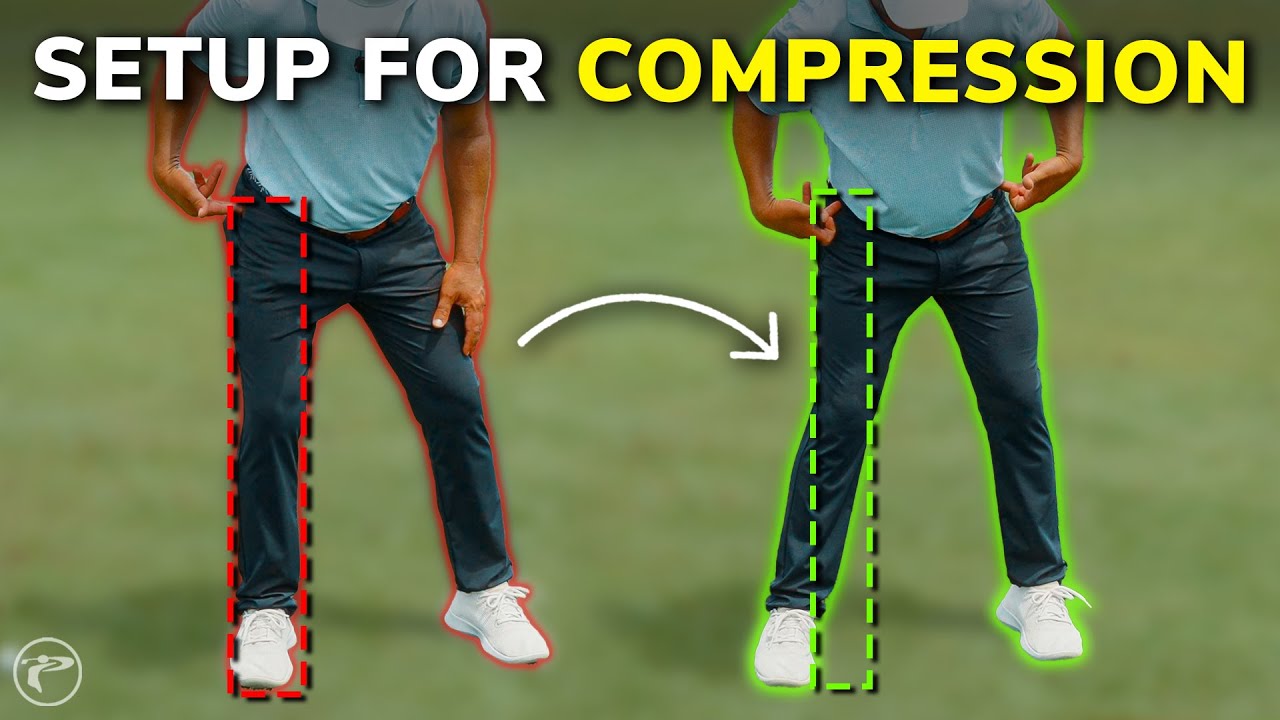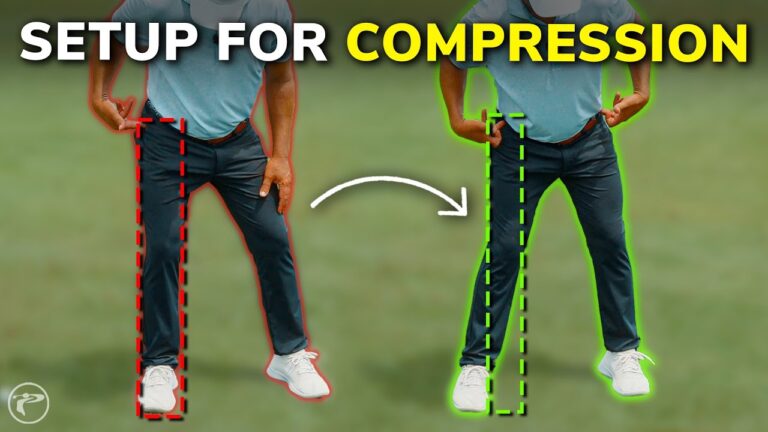
Every golfer seeks the thrill of a perfectly compressed ball — powerful shots that echo success. Discover how a simple setup adjustment can elevate your game.
Have you ever chunked the ball, leaving it frustratingly short? The secret to avoiding fat shots and consistently compressing the ball better may lie in refining your setup. This guide reveals essential setup tweaks and swing thoughts that can reimagine your ball striking capabilities.
Table of Contents
- Step 1: Importance of Low Point in Your Swing
- Step 2: Hip Bump for Low Point Control
- Step 3: Feet & Weight Distribution
- Step 4: Right Foot Pressure
- Step 5: Transition: Move the Handle First
- Step 6: Emphasize Rhythm
- Step 7: Consistency Through Practice
- FAQ: Setup and Ball Compression
- Conclusion: Transforming Your Game
Step 1: Importance of Low Point in Your Swing
Mastering ball compression begins with controlling the low point of your swing. This is crucial for ensuring the club strikes the ball before the ground. Incorrect low point positioning often results in thin shots or chunking. Proper knee and hip movement during your swing naturally places your low point correctly. Focus on keeping your right knee and hip slightly inside your right foot during transition to promote forward low point movement.
Step 2: Hip Bump for Low Point Control
The subtle “hip bump” shifts your hips slightly forward and to the left during transition, helping advance the low point beyond the ball. This technique ensures solid contact, with the club striking turf only after the ball. Practice balancing your weight initially towards your left foot, then gently bumping your hips forward as you transition to the downswing.
Step 3: Feet & Weight Distribution
Your setup’s influence extends to feet positioning and weight balance. Ensure your trail foot acts as a “door stop” by digging the instep into the ground, resisting any unwanted sliding. This stabilizes hip and knee positions, creating a foundation for better low point control and reducing the risk of chunking even from challenging lies.
Step 4: Right Foot Pressure
The right foot pressure impacts your swing significantly. Feel pressure on the inside of your right foot, avoiding lateral drift. Shifting pressure outward leads to instability and backslide of the low point. Practice maintaining this pressure during practice swings to refine stability and body alignment.
Step 5: Transition: Move the Handle First
The transition period is crucial for maintaining rhythm and timing. Start your downswing by moving the handle first, followed by your body; this promotes efficient energy transfer and precise clubhead path. Ensure your hands lead this movement, a fundamental in achieving optimal compression.
Step 6: Emphasize Rhythm
Rhythm balances your swing’s technical aspects. Speeding disrupts timing and leads to poor shots. Practice swinging at moderated speeds, maintaining an even tempo to strengthen control. Use aids like a metronome or rhythmic counting to internalize this tempo.
Step 7: Consistency Through Practice
Consistency arises from purposeful practice. Integrate one setup change at a time and gradually build up to speed with each skill. Utilize recording or mirrors for feedback and development. Trust in the setup to naturally correct chunking without focusing explicitly on errors.
FAQ: Setup and Ball Compression
Why do I chunk despite feeling I’ve swung well?
Chunking usually occurs due to an improper low point. Adjusting by stabilizing your trail foot and guiding hips forward can help align the low point correctly.
How can I detect if my hips are overextending?
Monitor your knee and hip alignment: outside movement indicates overextension. Aim for alignment within your foot for improved control.
Is exterior foot pressure viable during swings?
No, such pressures lead to instability and misalignment. Focus inward to maintain optimal swing dynamics and contact.
Does rhythm prevent chunking?
Yes, it reinforces timing and sequencing essential for proper contact. Practice maintaining a consistent tempo to enhance game stability.
Do setup adjustments aid in uneven lies?
Yes, particularly in challenging conditions like bunkers, stable setups prevent excessive shifts and maintain ball contact integrity.
Conclusion: Transforming Your Game
Refining your setup and swing sequence is key to mastering ball compression. Focus on advancing your low point, maintaining rhythmic flow, and strategically placing weight for efficiency and power. Renew your game by focusing on these transformative elements. By integrating these adjustments, you’ll achieve the ultimate goal: striking the ball first with compelling power. Try these tactics at the range and watch your golf game ascend to new heights.


0 Comments